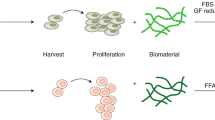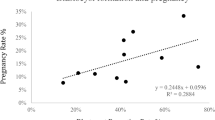Abstract
Research on, and commercialization of, cloned cattle has been conducted for more than 20 years. Early techniques relied on the physical splitting of embryos or using embryo cells for nuclear transfer to generate cloned animals. Milk and meat from these animals entered into the human food market with no evidence of problems. With the advent of nuclear transfer, which enables the direct transference and preservation of high-value meat- and milk-producing genotypes to offspring, concerns have been raised about whether the products from somatic cell nuclear transfer–produced animals are safe for human consumption. Studies on the biochemical properties of food products from cloned and noncloned animals have thus far not detected any differences. All data to date indicate no significant differences in the measured parameters between animals created by nuclear transfer and normally bred animals. Public acceptance of cloned animal products depends upon forthcoming US Food and Drug Administration approval along with convincing safety data.
This is a preview of subscription content, access via your institution
Access options
Subscribe to this journal
Receive 12 print issues and online access
$209.00 per year
only $17.42 per issue
Buy this article
- Purchase on Springer Link
- Instant access to full article PDF
Prices may be subject to local taxes which are calculated during checkout

Similar content being viewed by others
References
Bousquet, D. & Blondin, P. Potential uses of cloning in breeding schemes: dairy cattle. Cloning Stem Cells 6, 190–197 (2004).
Willadsen, S.M. & Polge, C. Attempts to produce monozygotic quadruplets in cattle by blastomere separation. Vet. Rec. 108, 211–213 (1981).
Williams, T.J., Elsden, R.P. & Seidel, G.E. Identical twin bovine pregnancies derived from bisected embryos. Theriogenology 17, 114–126 (1982).
Johnson, W.H., Loskutoff, N.M., Plante, Y. & Betteridge, K.J. Production of four identical calves by the separation of blastomeres from an in vitro derived four-cell embryo. Vet. Rec. 137, 15–16 (1995).
Willadsen, S.M. The development capacity of blastomeres from 4- and 8-cell sheep embryos. J. Embryol. Exp. Morphol. 65, 165–172 (1981).
Norman, H.D. & Walsh, M.K. Performance of dairy cattle clones and evaluation of their milk composition. Cloning Stem Cells 6, 157–164 (2004).
Norman, H.D., Lawlor, T.J., Wright, J.R. & Powell, R.L. Performance of Holstein clones in the United States. J. Dairy Sci. 87, 729–738 (2004).
Prather, R.S. et al. Nuclear transplantation in the bovine embryo: assessment of donor nuclei and recipient oocyte. Biol. Reprod. 37, 859–866 (1987).
Wilmut, I., Schnieke, A.E., McWhir, J., Kind, A.J. & Campbell, K.H. Viable offspring derived from fetal and adult mammalian cells. Nature 385, 810–813 (1997).
Chavatte-Palmer, P. et al. Health status of cloned cattle at different ages. Cloning Stem Cells 6, 94–100 (2004).
Cezar, G.G. et al. Genome-wide epigenetic alterations in cloned bovine fetuses. Biol. Reprod. 68, 1009–1014 (2003).
Cibelli, J.B., Campbell, K.H., Seidel, G.E., West, M.D. & Lanza, R.P. The health profile of cloned animals. Nat. Biotechnol. 20, 13–14 (2002).
Wilmut, I. et al. Somatic cell nuclear transfer. Nature 419, 583–586 (2002).
Delille, A.J.A.E., Anthony, R.V. & Seidel, G.E. Characteristics of placental and fetal tissues from Day 75 cloned bovine pregnancies. Theriogenology 55, 263 (2001).
Lanza, R.P. et al. Cloned cattle can be healthy and normal. Science 294, 1893–1894 (2001).
National Academies' National Research Council. Animal Biotechnology: Science Based Concerns (The National Academy Press, Washington, DC, 2002). <http://www.nap.edu/catalog/10418.html>
Rudenko, L. & Matheson J.C. The US FDA and animal cloning: risk and regulatory approach. Theriogenology 67, 198–206 (2003).
Rudenko, L., Matheson, J.C., Adams, A.L., Dubbin, E.S. & Greenlees, K.J. Food consumption risks associated with animal clones: what should be investigated? Cloning Stem Cells 6, 79–93 (2004).
Willadsen, S.M. Nuclear transplantation in sheep embryos. Nature 320, 63–65 (1986).
Wilson, J.M. et al. Comparison of birthweight and growth characteristics of bovine calves produced by nuclear transfer (cloning), embryo transfer, and natural mating. Anim. Reprod. Sci. 38, 73–83 (1995).
Bondioli, K.R., Westhusin, M.E. & Looney, C.R. Production of identical bovine offspring by nuclear transfer. Theriogenology 33, 165–174 (1990).
Garry, F.B., Adams, R., McCann, J.P. & Odde, K.G. Postnatal characteristics of calves produced by nuclear transfer cloning. Theriogenology 45, 141–157 (1996).
Willadsen, S.M. et al. The viability of late morulae and blastocyts produced by nuclear transplantation in cattle. Theriogenology 35, 161–170 (1991).
Diles, J.J.B. et al. Relationships between body measurements obtained on yearling Brangus bulls and measures of carcass merit obtained from their steer clone-mates. Prof. Anim. Sci. 12, 244–249 (1996).
Smith, S.L. et al. Global gene expression profiles reveal significant nuclear reprogramming by the blastocyst stage after cloning. Proc. Natl. Acad. Sci. USA 102, 17582–17587 (2005).
Hill, J.R. et al. Clinical and pathologic features of cloned transgenic calves and fetuses (13 case studies). Theriogenology 51, 1451–1465 (1999).
Renard, J.P. et al. Lymphoid hypoplasia and somatic cloning. Lancet 353, 1489–1491 (1999).
Chavatte-Palmer, P. et al. Clinical, hormonal, and hematologic characteristics of bovine calves derived from nuclei from somatic cells. Biol. Reprod. 66, 1596–1603 (2002).
Yang, L. et al. Expression of imprinted genes is aberrant in deceased newborn cloned calves and relatively normal in surviving adult clones. Mol. Reprod. Dev. 71, 431–438 (2005).
Kubota, C. et al. Six cloned calves produced from adult fibroblast cells after long-term culture. Proc. Natl. Acad. Sci. USA 97, 990–995 (2000).
Kato, Y. et al. Eight calves cloned from somatic cells of a single adult. Science 282, 2095–2098 (1998).
Tsunoda, Y. & Kato, Y. Recent progress and problems in animal cloning. Differentiation 69, 158–161 (2002).
Pace, M.M. et al. Ontogeny of cloned cattle to lactation. Biol. Reprod. 67, 334–339 (2002).
Cezar, G.G. Epigenetic reprogramming of cloned animals. Cloning Stem Cells 5, 165–180 (2003).
Heyman, Y. Nuclear transfer: a new tool for reproductive biotechnology in cattle. Reprod. Nutr. Dev. 45, 353–361 (2005).
Tian, X.C., Osborn, M., Savage, A.F., Andrew, S. & Yang, X. Normal growth patterns of cloned heifers from adult somatic cells. Theriogenology 57, 452 (Abst) (2002).
Govoni, K.E. et al. Age-related changes of the somatotropic axis in cloned Holstein calves. Biol. Reprod. 66, 1293–1298 (2002).
Enright, B.P. et al. Reproductive characteristics of cloned heifers derived from adult somatic cells. Biol. Reprod. 66, 291–296 (2002).
Xue, F. et al. Aberrant patterns of X chromosome inactivation in bovine clones. Nat. Genet. 31, 216–220 (2002).
Zhang, S. et al. Genomic imprinting of H19 in naturally reproduced and cloned cattle. Biol. Reprod. 71, 1540–1544 (2004).
Tian, X.C., Xu, J. & Yang, X. Normal telomere lengths found in cloned cattle. Nat. Genet. 26, 272–273 (2000).
Savage, A.F. et al. Behavioral observations of adolescent Holstein heifers cloned from adult somatic cells. Theriogenology 60, 1097–1110 (2003).
Kasai, K., Sano, F., Miyashita, N., Watanabe, S. & Nagai, T. Comparison of the growth performances of offspring produced by a pair of cloned cattle and their nuclear donor animals. J. Reprod. Dev., published online 29 September 2006 (RMID=n008756).
Tecirlioglu, R.T. et al. Semen and reproductive profiles of genetically identical cloned bulls. Theriogenology 65, 1783–1799 (2006).
Martin, M., Adams, C. & Wiseman, B. Pre-weaning performance and health of pigs born to cloned (fetal cell derived) swine versus non-cloned swine. Theriogenology 62, 113–122 (2004).
Tamashiro, K.L. et al. Cloned mice have an obese phenotype not transmitted to their offspring. Nat. Med. 8, 262–267 (2002).
Piedrahita, J.A., Walker, S. & Zaunbrecher, G. Organ weight variation in cloned pigs. Reprod. Fer. Dev. 16, 155 (2005).
Keefer, C.L., Bhatia, B., Kafidi, N., Laurin, D. & Downey, B.R. Hematological and biochemical profiles of neonatal and growing goat clones derived from adult somatic cells. Theriogenology 55, 274 (2001).
Shiga, K. et al. Growth and fertility of bulls cloned from the somatic cells of an aged and infertile bull. Theriogenology 64, 334–343 (2005).
Rhind, S.M. et al. Cloned lambs—lessons from pathology. Nat. Biotechnol. 21, 744–745 (2003).
Wells, D.N., Forsyth, J.T., McMillan, V. & Oback, B. The health of somatic cell cloned cattle and their offspring. Cloning Stem Cells 6, 101–110 (2004).
Wells, D.N. Animal cloning: problems and prospects. Rev. Sci. Tech. 24, 251–264 (2005).
Tian, X.C. et al. Meat and milk compositions of bovine clones. Proc. Natl. Acad. Sci. USA 102, 6261–6266 (2005).
Tome, D., Dubarry, M. & Fromentin, G. Nutritional value of milk and meat products derived from cloning. Cloning Stem Cells 6, 172–177 (2004).
Walsh, M.K., Lucey, J.A., Govindasamy-Lucey, S., Pace, M.M. & Bishop, M.D. Comparison of milk produced by cows cloned by nuclear transfer with milk from non-cloned cows. Cloning Stem Cells 5, 213–219 (2003).
Takahashi, S. & Ito, Y. Evaluation of meat products from cloned cattle: biological and biochemical properties. Cloning Stem Cells 6, 165–171 (2004).
Yonai, M. et al. Growth, reproduction, and lactation in somatic cell cloned cows with short telomeres. J. Dairy Sci. 88, 4097–4110 (2005).
Shearer, J.K., Bachman, K.C. & Boosinger, J. Document DS61 (Florida Cooperative Extension Service, Institute of Food and Agricultural Sciences, University of Florida, Gainesville, FL.; 2003).
Aoki, S. et al. A comparative investigation of the characteristics of Holstein cows cloned from colostrum–derived mammary gland epithelial cells in an automatic milking system. Theriogenology 59, 234 (Abst.) (2003).
Faber, D.C., Ferre, L.B., Metzger, J., Robl, J.M. & Kasinathan, P. Agro-economic impact of cattle cloning. Cloning Stem Cells 6, 198–207 (2004).
Author information
Authors and Affiliations
Corresponding author
Ethics declarations
Competing interests
R.P. and J.X. are employees of δCyagra and Evergen Biotechnologies, respectively. (R.P. is no longer at Cyagra.) X.Y. is the scientific founder of Evergen.
Supplementary information
Supplementary Table 1
Details of animals used for meat composition analysis.
Rights and permissions
About this article
Cite this article
Yang, X., Tian, X., Kubota, C. et al. Risk assessment of meat and milk from cloned animals. Nat Biotechnol 25, 77–83 (2007). https://doi.org/10.1038/nbt1276
Published:
Issue Date:
DOI: https://doi.org/10.1038/nbt1276
This article is cited by
-
Aberrant epigenetic changes and gene expression in cloned cattle dying around birth
BMC Developmental Biology (2008)



